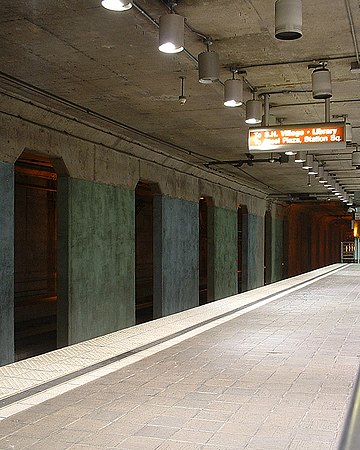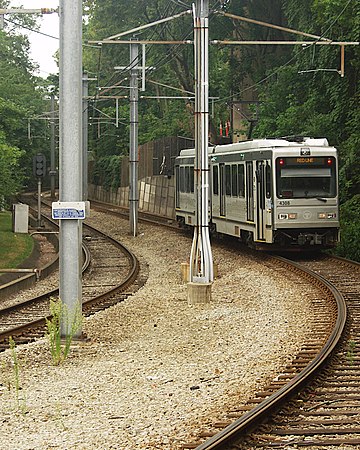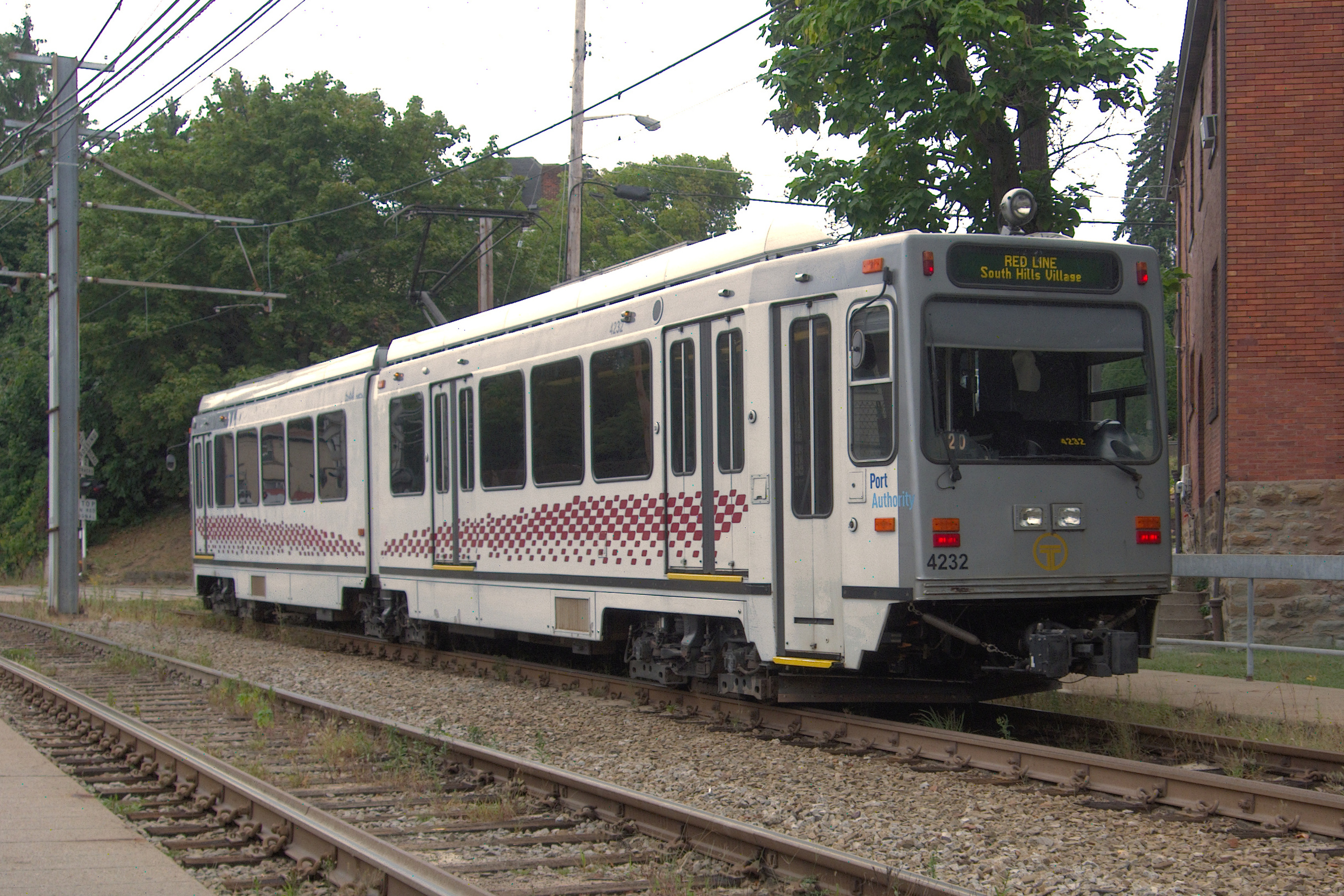
You used to come down these stairs from the street to enter Gateway Center, and if you were lucky you would hear the sound of wheels squealing around the loop, indicating that you were just in time.
The old Gateway Center station closed forever on October 30, 2009, as the new line to the North Side was under construction. These pictures were taken on the old station’s last night in service. A new Gateway (not Gateway Center) station, much larger and more pleasant, is open now, but the old Gateway Center is still there as a ghost station, almost unchanged since the day it was abandoned. If you are leaving Gateway headed for Wood Street, you can see the old station on the right side of the car.

Approaching the platform…

The last time old Pa Pitt glanced out the window at the ghost station, those posters on the right were still there.

There was only one platform. Gateway Center was the end of the line, so the cars came in from the east (above), passed the station, went around a squealy loop, and came back in from the west. Watching the car pass straight through the station often gave out-of-town visitors a moment of panicked confusion.

Here we are looking toward the loop, listening to the squealing wheels as our car comes around for us.

At last our car enters the station. Note the lower-level platform, blocked off by this time, that was built to accommodate the old PCC cars, some of which ran in Pittsburgh until 2003. (Some of those same cars, completely rebuilt, are now running in San Francisco.) These lower-level platforms can still be seen at Steel Plaza and Wood Street. The PCC cars were also the reason for the loop: the more modern Siemens and CAF trolleys are double-ended, but PCC cars went in only one direction.

We board our car for the very last time, knowing that we will never hear that loop squeal again.
For some time after the new station opened, the announcements on the cars were still clearly the old recorded announcements, but truncated: the professional announcer voice said “Approaching Gateway C—” as the car rolled into the station. Those announcements have now been re-recorded, but old Pa Pitt secretly enjoyed them. Many cities have ghost stations in their subways, but Pittsburgh was the only city with a ghost sibilant.












